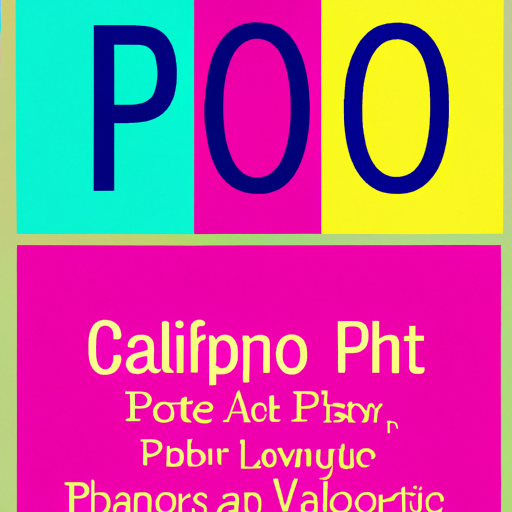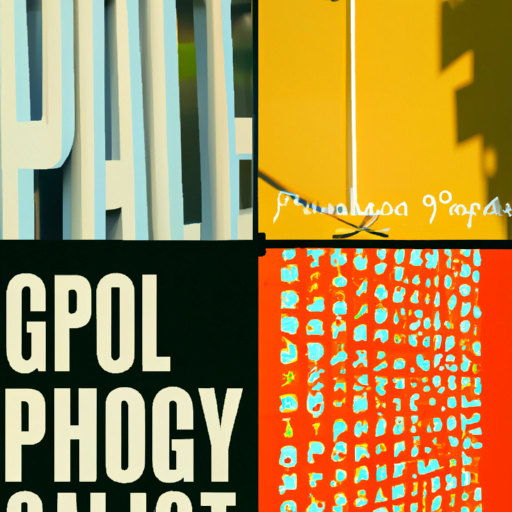
-
Table of Contents
The Role of Typography in Signage Design

Typography plays a crucial role in signage design, as it has the power to communicate messages effectively and create a lasting impression on viewers. Whether it’s a street sign, a billboard, or a store sign, the typography used can greatly impact the overall design and effectiveness of the signage. In this article, we will explore the importance of typography in signage design and how it can enhance the visual appeal and readability of signs.
The Power of Typography in Signage
Typography is more than just selecting a font; it involves the art and science of arranging type to make written language legible, readable, and visually appealing. When it comes to signage design, typography can make or break the effectiveness of the message being conveyed. Here are some key reasons why typography is crucial in signage:
- Legibility: The primary purpose of signage is to convey information to the intended audience. Typography plays a vital role in ensuring that the text on the sign is easily readable from a distance and at various viewing angles. The choice of font, size, and spacing can significantly impact the legibility of the signage.
- Brand Identity: Typography is an essential element in establishing and maintaining a brand’s identity. Consistent use of typography across different signage helps create a cohesive and recognizable brand image. For example, the iconic Coca-Cola logo is instantly recognizable due to its unique typography.
- Emotional Impact: Typography has the power to evoke emotions and create a specific mood or atmosphere. Different fonts convey different feelings. For instance, a bold and modern font may be used to convey a sense of confidence and innovation, while a script font may evoke a feeling of elegance and sophistication.
Choosing the Right Typeface
When selecting a typeface for signage, several factors need to be considered to ensure optimal legibility and visual appeal. Here are some key considerations:
- Readability: The typeface should be easily readable from a distance and at different sizes. Avoid overly decorative or complex fonts that may hinder legibility.
- Contrast: The contrast between the typeface and the background is crucial for legibility. Ensure that there is enough contrast to make the text stand out clearly.
- Brand Consistency: If the signage is part of a larger brand identity, it is important to choose a typeface that aligns with the overall brand image. Consistency in typography helps reinforce brand recognition.
- Audience: Consider the target audience when selecting a typeface. Different demographics may respond differently to certain fonts. For example, a playful and informal font may be more suitable for signage targeting children, while a professional and clean font may be more appropriate for corporate signage.
Case Studies: Effective Typography in Signage Design
Let’s take a look at some real-world examples of signage design that effectively utilize typography:
1. New York City Subway Signage
The typography used in the New York City subway signage is a classic example of effective typography in signage design. The Helvetica font, with its clean and simple design, ensures excellent legibility even in the fast-paced and crowded subway environment. The consistent use of typography across all subway stations creates a unified and easily recognizable system.
2. Apple Store Signage
Apple stores are known for their sleek and minimalist design, and typography plays a significant role in achieving this aesthetic. The use of the San Francisco font, specifically designed for Apple, creates a modern and cohesive look across all signage within the store. The clean lines and generous spacing enhance readability and reinforce the brand’s image of simplicity and elegance.
The Future of Typography in Signage Design
As technology continues to advance, typography in signage design is also evolving. Here are some emerging trends and technologies that are shaping the future of typography in signage:
- Responsive Typography: With the rise of digital signage, typography can now adapt and respond to different screen sizes and resolutions. Responsive typography ensures optimal legibility and readability across various devices and platforms.
- Dynamic Typography: Dynamic typography allows for real-time changes in the appearance of text, enabling signage to adapt to different contexts and situations. For example, a digital billboard can display different messages throughout the day using dynamic typography.
- Custom Fonts: With the increasing accessibility of font creation tools, businesses can now create custom fonts that align perfectly with their brand identity. Custom fonts help create a unique and memorable visual identity.
Conclusion
Typography plays a vital role in signage design, impacting legibility, brand identity, and emotional impact. Choosing the right typeface is crucial to ensure optimal readability and visual appeal. Real-world examples, such as the New York City subway signage and Apple store signage, demonstrate the effective use of typography in creating cohesive and recognizable signage systems. As technology advances, responsive typography, dynamic typography, and custom fonts are shaping the future of signage design. By understanding the role of typography and staying updated with emerging trends, designers can create impactful and visually appealing signage that effectively communicates messages to the intended audience.
